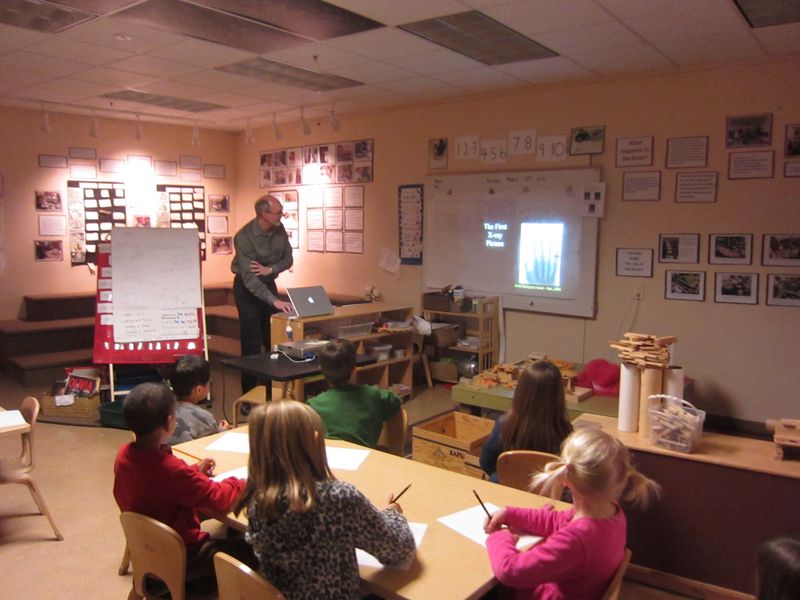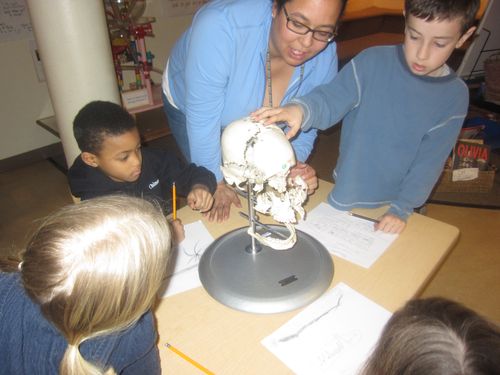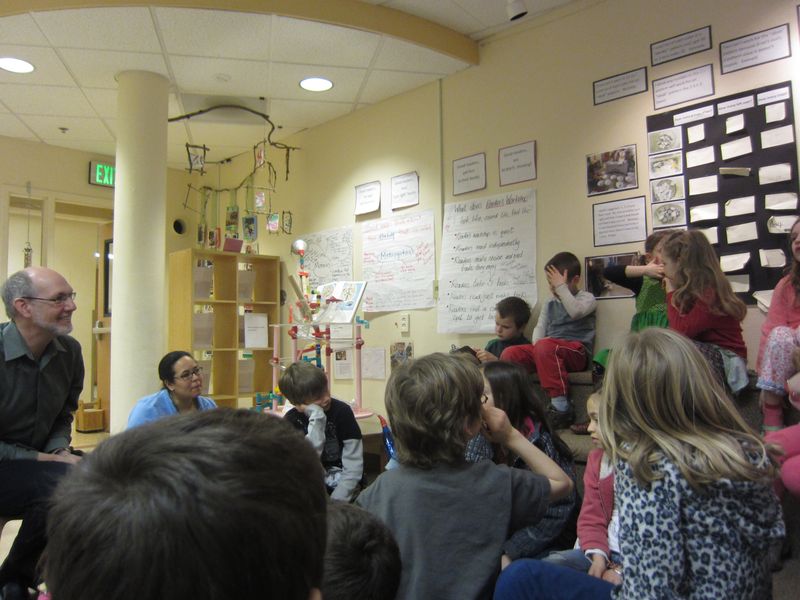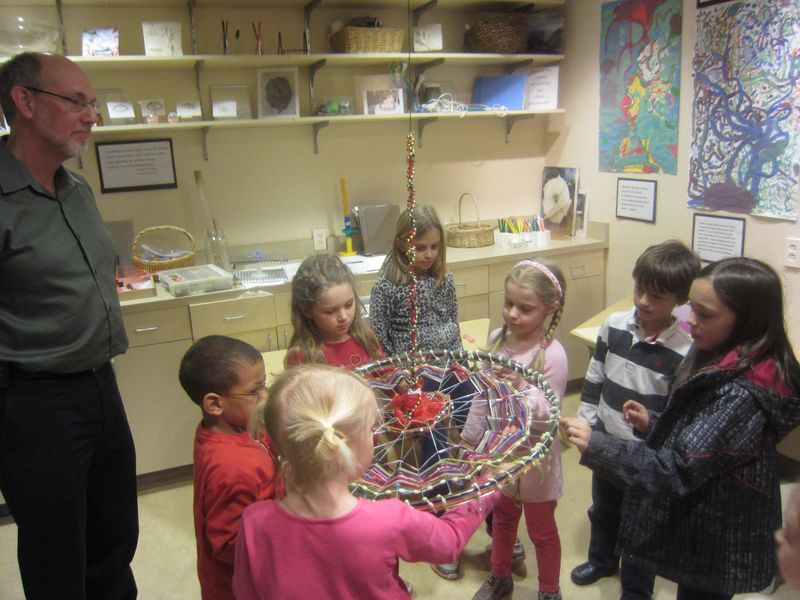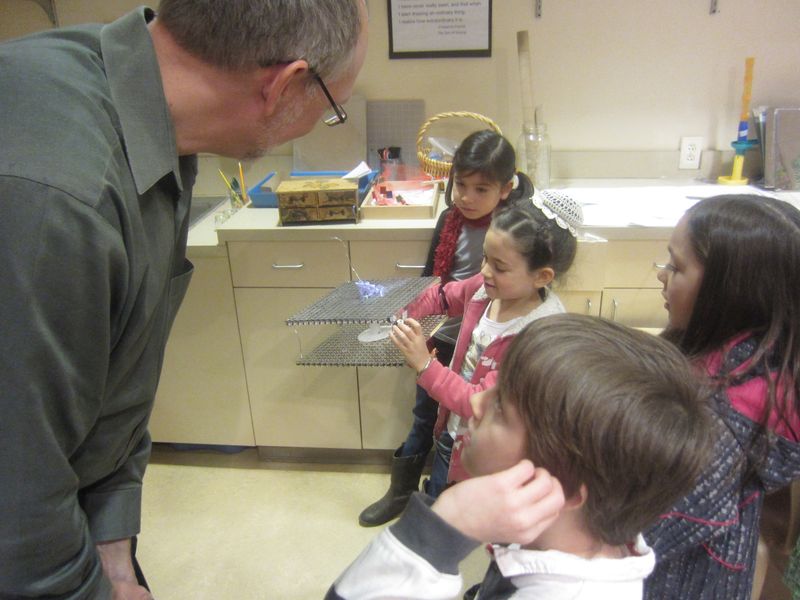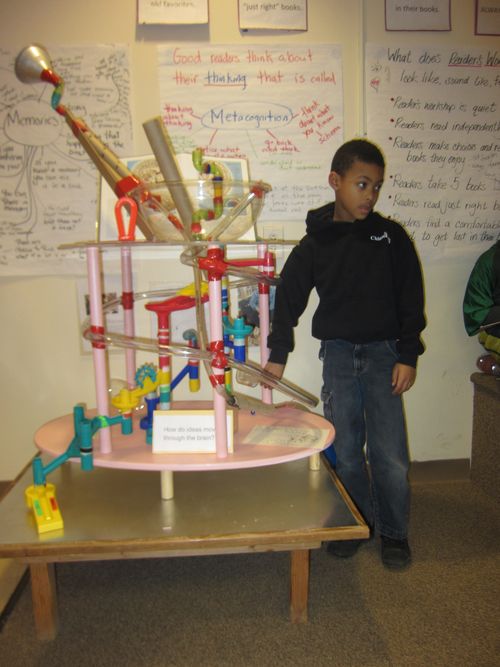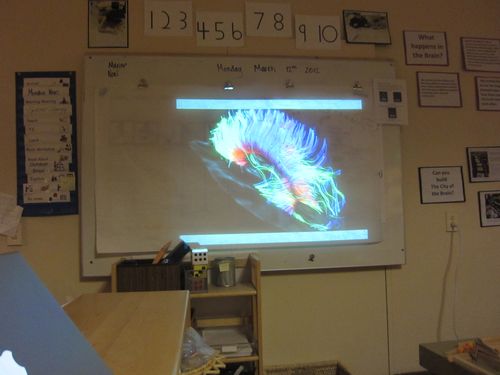Science, Research and Synthesis
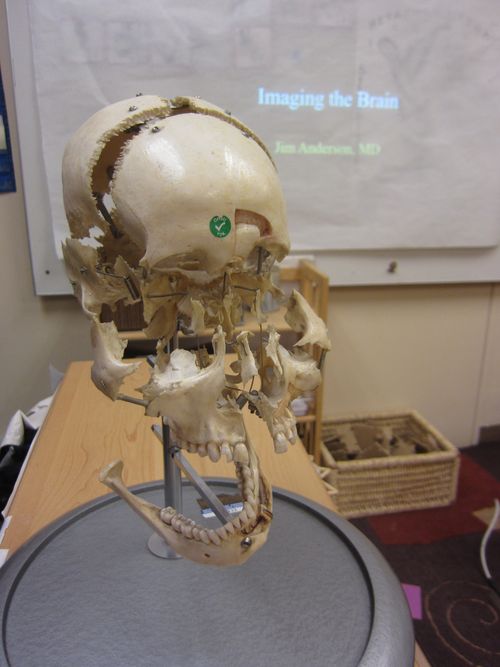
The collection in this post brings together both formal documentation that was created at the end of a school year in our classroom for 6-8 year olds, and also a reflection from one of the teacher-researchers, Zalika Gardner, who was working with the children. (You may remember Zalika from the Social/Emotional module, where she wrote about her work with this group of children early in the school year. You may find it helpful to revisit that article as you consider the reflection questions at the end of this article.)
Take a look at these panels, created collaboratively by several teachers. These panels synthesize the year's journey and attempt to extract most powerful nuggets from the experience. They represent these teacher-researchers' learning in the midst of the children's learning.
Below, Zalika offers a window into a moment of her own experience, thinking, and reflection.
______________________________
What Happens When Scientists Collaborate? By Zalika Gardner
You know how sometimes, when a great idea hits the air, everyone in the room can feel it? Well, that happened to us some time ago when an Opal 2 student, deeply engaged in our brain study suggested, "Maybe we could invite a scientist in to share our theories and help us think about a new invention…" A contagious excitement spread through the Opal 2 researchers and the hunt was on for "a scientist" who could collaborate with us – and we do mean collaborate with us. We teachers stood in awe of the theories and ideas already put forth by the students. We wondered, How could we both learn from an "expert" and insure that the children and their ideas were honored? How could we inspire curiosity and invite engagement from both students and scientist as co-creators of an experience that would ignite the interest we already saw percolating? Our scientist had to be special…
Just before spring break, at long last we received a visit from a friend that we fondly refer to as … "the scientist." Known to others as Dr. Anderson, Oregon Health & Science University radiologist, "our scientist" visited and invited us to wonder right alongside him about our brains. I wanted to share some small pieces of our conversation and sharing. Truly it was a marvelous collaboration.
What is the brain made of? D. R
Cells:
Five kinds of cells. Millions and millions of cells… Dr. Anderson
What protects it? S.M.
The skull is around your brain to protect it. But you still have to be sure to wear your helmet! Dr. A.
Can you tell me about some of your research? Dr. A.
We've used normal materials and changed them into the brain like in the studio we've turned a wheel into the dreams… P.B.
Wow, that's just the work we do. When we have a big question we break it into parts and create models... Dr. A.
How does…why does your brain help you think? T. P.
That's just what we as scientists study. How does a thought come to be? – Dr. A.
(At this point about half of the class raise their hands to explain their theory on how a thought comes to be and he acknowledges their engagement with admiration.)
Several students explain pieces of the model of thinking, memory, emotion and ideas.
Sometimes children have some of the best thoughts about how things work because you are able to think about the things you are learning in a different way. Dr. A
Do you remember that we were inspired to invite a scientist to visit because we were interested in inventing something? Erin
Oh, yeah, now that you reminded me. D.R.
So I'm wondering if there is a big question that we could maybe help brain scientists study more about through an invention of some kind? Erin
Well, there is still so much to learn about connection and how everything in the brain connects together. It's the connections that make the brain work. Like how you have the different marbles in your model. How would different marbles come together? Dr. A
Like how memories and learning connect and a new idea comes! M.B.
We are making new ideas right now! P.K.
Indeed we were and have continued to grow our theories about the heart, soul, brain and emotions. Stay curious!
_____________________________
Please share your thoughts in the comments section below or the Forum:
- What evidence do you see of the adults' intentions?
- What evidence do you have of their willingness to grow their own theories about teaching and learning?
- What relationships and connections do you see between the formal documentation and the written reflection?
- Where do you see evidence of Zalika's stance as a teacher researcher?
- Do you think Dr. A met the criteria of the "special" kind of scientist Zalika was looking for? Why?
- What connections do you make between Dr. Anderson's approach to his work and Zalika's approach to hers?


